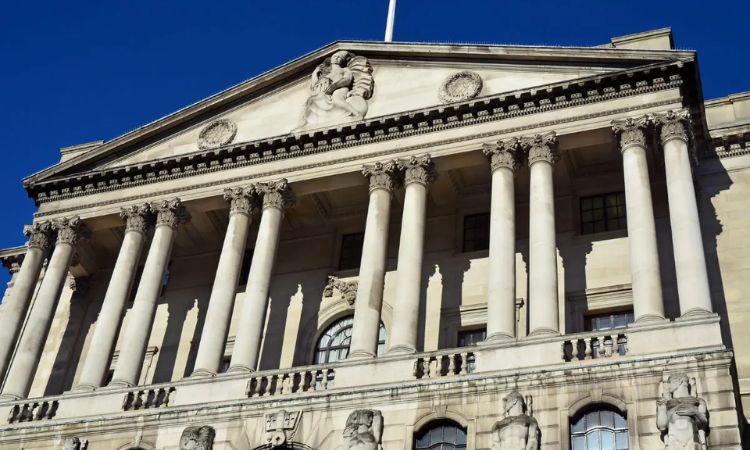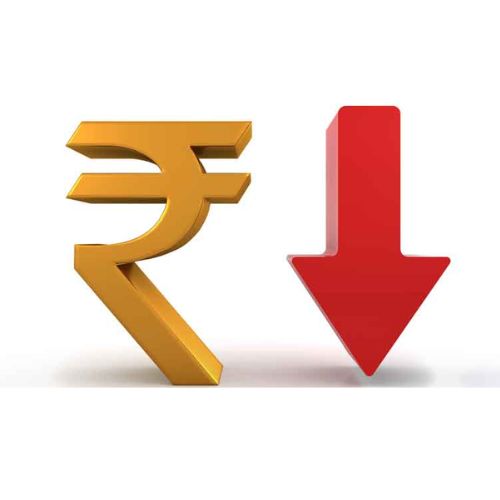The US Federal Reserve clings to crucial interest rates but implies future rate booms to curb towering inflation. Fed officials prophesy extra surges, anticipating economic expansion and elevated core inflation. The resolution triggered slumps in the stock market, and the Treasury yields sprouted, as the market eagerly awaits telltale indicators of inflation deceleration.

Image-: Forbes
The US Federal Reserve abstained from altering its key interest rate on Wednesday after a series of 10 consecutive hikes intended to combat high inflation. However, in an unexpected move, the Fed hinted that it may increase rates twice more this year, starting as early as next month. The Fed’s decision to maintain its benchmark rate at approximately 5.1 percent, its highest level in 16 years, suggests that it believes the higher borrowing rates have had some success in curbing inflation. Nevertheless, top Fed officials want to take the time to evaluate how their rate increases have impacted inflation and the economy.
The central bank’s 18 policymakers anticipate raising their key rate by an extra half point this year, reaching about 5.6 percent, as per the economic projections they issued on Wednesday. The updated forecasts revealed a more hawkish Fed than most analysts anticipated. Twelve of the 18 policymakers predicted at least two more quarter-point rate hikes, while four advocated for a quarter-point increase. Only two envisioned keeping rates unchanged. The policymakers also predicted that their benchmark rate would remain elevated for longer than they did three months ago.
During a news conference, Fed Chair Jerome Powell said, “We understand the hardship that high inflation is causing, and we remain strongly committed to bringing inflation back down to our 2 percent goal. The arduous task of deflating the economy will require a painstakingly slow approach, as time is of the essence.” Powell abstained from asserting that the Federal Reserve’s decision-makers had pledged to recommence their interest rate increases at their upcoming assembly in the latter part of July.
One reason why officials may be predicting additional rate hikes is that they foresee a somewhat healthier economy and more persistent inflation that may require higher rates to cool. Their revised prognostications reveal a prediction of a 1% surge in economic growth for 2023, a remarkable improvement from the abysmal 0.4% forecast in March. Additionally, they envisage “core” inflation, which excludes capricious food and energy prices, to skyrocket to a staggering 3.9% by the culmination of this year, towering above their previous expectations from three months ago.
During his news conference, Powell emphasized that the Fed still sees the strong job market and accompanying wage growth as contributing to high inflation. At the same time, he expressed optimism that lower apartment rental costs, among other factors, may help slow inflation in the coming months. He stressed that the Fed wants to see a decisive slowdown in inflation before holding off on further rate hikes. “We want to see inflation coming down decisively,” he said.
Following the Fed’s announcement, which came after its latest policy meeting, stocks plummeted, and Treasury yields soared, with the two-year Treasury note’s yield jumping from 4.62 percent to 4.77 percent. The Fed’s aggressive rate hikes, which have made mortgages, auto loans, credit cards, and business borrowing more expensive, have been intended to reduce spending and overcome the worst inflation in four decades. Average credit card rates have reached over 20 percent, setting a new high.
Powell and other top policymakers have also indicated that they want to assess how much a pullback in bank lending might be weakening the economy. As interest rates have risen, banks have slowed lending, and demand for loans has decreased. Some analysts fear that the collapse of three major banks last spring might cause jittery lenders to tighten their loan criteria sharply.
Since March of last year, the Fed has jacked up its benchmark rate by a whopping 5 percentage points, making it the fastest rate hike in 40 years. If Powell had skipped this hike, it could have been a powerful way to rally a divided policymaking committee.
The committee’s 18 members are fiercely divided on the issue of rate hikes, with some advocating for one or two more hikes while others want to leave the Fed’s key rate untouched for a few months. The latter group fears that a too-aggressive approach could trigger a catastrophic recession.
Fortunately, the latest inflation data brings some encouraging news. The government’s report shows that the increase in core prices is largely due to exorbitant rents and the soaring cost of used cars. However, wholesale used car prices have recently seen a slump, hinting at a possible decline in retail prices. Additionally, new lease agreements with more tempered price increases mean that rents are also expected to fall in the coming months.
Unfortunately, these lower prices will take time to be reflected in the government’s metrics. Despite these concerns, the economy has thus far outperformed expectations set by the central bank and economists alike. Businesses continue to hire at a healthy pace, prompting consumers to continue spending on leisure activities such as travel, dining out, and entertainment.














